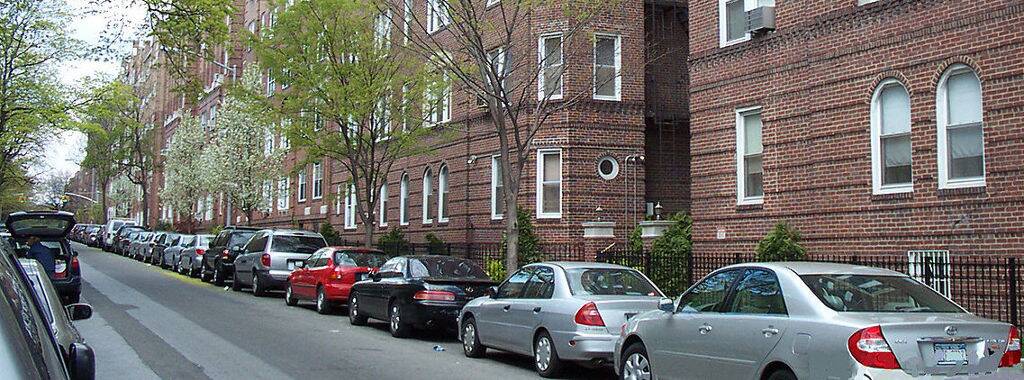I accept RentHop's
Terms of Use and
Privacy Policy

Login / Register
Save searches and listings, create email alerts, and see rent averages by neighborhood
— Or sign in with Google —
Please enter your info below

At 109 square miles, Queens is the largest of the five boroughs. Above Brooklyn and east of Manhattan and The Bronx, Queens is the most diverse borough, with over 138 languages spoken here according to the census. Queens is not a pretentious borough, though. It's quieter, more relaxed, and just as culturally interesting (if not more so) as the rest of New York.

While Queens has been slower to gentrify than its neighbors, it’s catching up quick. New apartment complexes are popping up everywhere, especially close to Manhattan. These residences are attracting new New Yorkers and businesses to Queens like never before. This younger group of professionals, artists, and entrepreneurs are transforming Queens into the new, hip borough.
If you’re a foodie, Queens is the place to be. The borough is known for its authentic cuisines from Thai to Greek. Queens, as the most diverse urban area in the country, truly masters its food meaning it's all authentic and delicious.
The public transportation system of New York City is expansive and reliable. That said, the subways in Queens don’t service the full borough. In many neighborhoods, cars are required for transportation, or a healthy patience for the bus is needed. Queens has the reputation of resembling suburbia, and when you get far enough out into the borough, you understand why.
In the outer parts of the borough, The Long Island Railroad (LIRR) is commonly used to get to Manhattan; there are 23 LIRR stations in Queens. For those close to the East River, there are a few more options, Queens Plaza (access to the E, M, and R trains) and The Jackson Heights-Roosevelt stop (access to the E, F, M, R, and 7 trains as well as busses to LaGuardia).
The last decade saw a dramatic increase in NYC support for bikers. Queens has seen countless new miles of bike lanes over the last few years. Citi Bike, however, doesn’t go too deep into Queens, mostly stopping once you hit Jackson Heights. That said, biking is still a great option if you have the means, especially when there are no direct subway lines to your destination.
Queens is one of the safest places in New York City. Out of the top 20 safest neighborhoods in NYC, Queens has 9 of them, with Manhattan only having six that make the list. That said, violent crime is rare no matter where you go in The Big Apple.
Queens has a ton of Hospitals with some of the best being The Queens Hospital Center and New York Presbyterian Queens. Queens has world class facilities for any situation that might arise.
Queens was established in 1683, after the English conquered the colony of New Amsterdam in 1664. One of the 12 original New York provinces, Queens is responsible for one of the first legal tolerance laws in the region, The Flushing Remonstrance of 1657, meant to voice concern over the persecution of Quakers.
In 1897, the citizens of Queens voted to become part of the greater city of New York, splitting from the eastern Nassau County in 1899, though many of the neighborhood's borders are still a bit fuzzy with their Long Island counterparts. Afterward, Queens was largely a suburban refuge in the east, an immigrant haven in the north west, and a region of industry in the south west.
| Bedrooms | Rent | Rent / sqft |
|---|---|---|
| Studio | $3,020 | $5 |
| 1 BR | $2,698 | $4 |
| 2 BR | $3,350 | $3 |
| 3 BR | $3,400 | $3 |
| 4+ BR | $4,600 | $3 |
We make sure to refresh our rental listings every hour in order to provide you with the newest and most up-to-date inventory available on the market.
Queens is located within the New York - Newark, NY - NJ - CT Urban Area. This area currently has 18,812,161 residents in 6,707,347 households. Out of the total population, 40.12% of the residents speak another language at home instead of English. The majority of the inhabitants in this urban area are currently unmarried and have a median age of 38.
When looking at residents older than 25, around 25.16% have graduated from high school, 22.38% have a bachelor's degree, and 15.92% have obtained their master's degree or above. Employment rate is typically around 59.7% and the median income in this urban area is $68,319.
At least 50.07% of those living in this urban area are renting their homes. Most residents will commute to work by car with an average commute time of 36 minutes.
